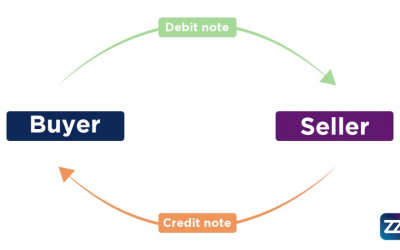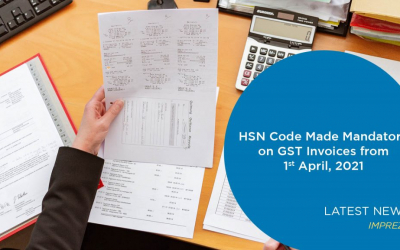
Those who aren’t tech-savvy are generally confused by the heavy Inventory Management terminologies used. Today we are going to decouple all the essential terms and understand their applications in Inventory Management. If new to Inventory Management, don’t forget to read: Inventory Management 101: Small Business Guide.
MAJOR CONSTRAINTS IN INVENTORY MANAGEMENT
- Inventory: Defined as the complete list of items bought with the company’s working capital such as property, goods in stock, or the contents in a building.
- Operational Expenses: The firm’s expenditure in the sale of the inventory in stock. In simple words, the total cost in selling the merchandise purchased and stored by the firm.
- Throughput: The output from the sales made, which compensate and generate capital, and lead time for the working capital expenditure in the whole supply chain process.
These trios are the heart of Inventory Management. They are essential to profit and generate more working capital to initiate better management and compensate for effective Inventory Management. Sustaining a firm’s growth is possible only if at least two of these constraints are managed in an informed and correct manner.
INVENTORY TERMS
1. Inventory Control: This involves accounting and the act of physically counting the stock ledger and ensuring they match with the actual data values. The counting of inventory assets and site control fall under this category.
- Stock Take Policies: It involves the processing and recording the amount of inventory held by the firm. This policy applies to Inventory Managers responsible for managing the stocks. They do not take down the data in the databases manually, but automation software like Imprezz play a crucial role in reducing effort and time, hence increasing productivity. The necessity of such software is seen in accounting because of the reduction in mistakes and the short duration of undertaking such mechanical tasks, which take hours for a human.
- Kanban: It is an Inventory Management Technique involving Just-In-Time and lean manufacturing processes. It is, in short, a scheduling system for organising the supply chain. This process is used by managers to track the progress of the inventory, hence provided a clear view of the entire supply chain.
- Perpetual Inventory System (ERP): Enterprise Resource Planning refers to the various software and technologies used to plan and manage the supply chain and manufacturing effectively. It is a real-time process mediated by advanced software like that of Imprezz.
- Dead Stock Management: Inventory with no turnover, which has undergone no sales, is termed dead stock. Forgotten and neglected dead stock in the warehouse is the direct result of poor warehouse management. Deadstock management must be implemented with proper technologies to reduce the excess useless stock.
2. Inventory Planning: With the suddenness of the pandemic, the firms which had the perfect planning for unforeseen events are the ones who have gained an edge. Planning according to the future demand forecast and stocking accordingly falls under Inventory Planning.
- ABC Classification: Classifying the inventory based on priority is one of the most effective Inventory Management Techniques. This includes giving more priority to the stocks yielding more profit and giving the least priority to the one forecasted to be deadstock. This reduces the overstocking of the unwanted stocks and rich storage of the most profitable inventory in the warehouse.
- Age Reserve Planning: Inventory Reserve is a contra asset of a firm’s balance sheet and ledger files, made in anticipation of forecasting inventory potential to be deadstock. This extra list of Inventory Reserve Planning will greatly help the firm curb the loss in working capital due to overstocking.
- Supply-Demand Planning: Self-explanatory name involves carefully analyzing all the trends in supply-demand ratio using automation software and managing inventory accordingly. Analyzing Inventory levels is a must for this step. This is almost similar to Economic Order Quantity (EOQ)
3. Inventory Management Processes: This is the complete integrated management system of the supply chain, keeping in mind the above two processes. It incorporates advanced software of Inventory Management, automation technologies, and other software like IIOT and AI.
- Strategic Stocking Levels: Stocking strategy enables moving inventory to the active inventory category, ensuring the firm stocks the right inventory and optimises the process. This means there are no discrepancies of over or understocking due to the lack of transparency or a good centralized communication between the levels of the business.
- Integrated Business Planning: This is a process of maximizing profit/cash flow while minimizing risk using financial and operational optimization technologies. This uses strategy and mapping technologies like that of Imprezz, which provides a detailed strategy chart of each inventory and the specifications of the article in the same place. In other words, each inventory is tracked real-time using the software for creating the scope of reorder point.
- Inventory Optimization: Taking the supply and demand volatility into account, the most effective balancing of capital investment and service-level goals over large quantities of stock is called Inventory Optimization. This smoothens the functioning of the supply chain, and Inventory Optimization helps increase the percentage yield with the expenditure of the same working capital.
- Strategic Sourcing: The approach by a business to consolidate the purchasing power to find the best possible sales deal and the best return for the inventory. This takes place at the final part of the supply chain, i.e. the sales and marketing department. It is given so much importance because the return on investment made so much on the inventory and management software are decided based on strategic sourcing.
- Sales and Operations Planning: This process involves all the levels of a business working together through a centralised system. The smooth functioning of the supply chain is solely dependent on this step, and good software like that of Imprezz provides a well-integrated communication system for the same. Firms must focus on creating a single production plan and adhere to it carefully, right from sales order/purchase order.
- Inventory Carrying Cost Strategy: Inventory carrying cost is the gross net amount spent on storing the inventory. It includes intangibles like depreciation and lost opportunity cost and the cost of storing finished goods in the warehouse. This strategy revolves around warehouse management and dead stock management.
INVENTORY MANAGEMENT INDICATORS
Managing inventory is not a single step process. There are several indications that provide an idea about the efficiency of Inventory management in a firm. Reducing such indicators, which are liability, is the key to implement a great Inventory Management Strategy. These unproductive burdens are mentioned below, and companies must take extra care to remove them from the supply chain.
- Spoilage: Spoilage are goods harmful goods which cannot be moved further lest it harms the consumer. Reducing spoilage must be made an integral part of an efficient supply chain.
- Dead Stock: Products that are no longer in demand and are waiting for an ambitious customer to buy them. This deadstock must be reduced, lest huge losses due to overstocking can be incurred by the firm. Good Warehouse Management Software like that of Imprezz are the correct choice. People generally confuse it with safety stock, but safety stock is an asset rather than a liability.
- Ageing Stock: Stocks whose current price is no longer appealing to the customer are called ageing stocks. Providing lucrative deals help manage the ageing stocks, leading the customer to buy these stocks in bulk. Ageing stocks are like a time bomb. The more the delay, the cheaper it must be sold. What must be taken care of is none of the stock becomes ageing stock, and the solution is simple. Use Business analytics tools like Imprezz, which keep track of each article in detail.
- Unproductive Cash Usage: Creative ways must be devised, which ensures the burden of carrying extra inventory is lifted from your shoulders. It can be achieved in several ways:
- Dropshipping: A passive method where the third party, i.e. the vendor, ships the inventory directly on your behalf, hence reducing storage costs of raw materials.
- Consigned Inventory: The third party, i.e. the suppliers, retain the inventory ownership till the consumption of the supplies by the customer. This reduces the chances of stocks getting converted to ageing stocks.
- Cross-Dock: The technique in which the finished product doesn’t even set foot in your warehouse, but there is a direct transfer of goods right from the inbound trailer to the outbound trailer, making the handling cost negligible.
The importance of the Inventory Management system is already illustrated in the blog: Inventory Management 101: Small Business Guide. Yet, this blog instigates another line of thinking: should we focus on Inventory Management or Inventory Minimizing? This debatable topic needs a detailed analysis from your end, what kind of business you are running, the logistical and storage cost accosted with your product, and many other factors.
Use Imprezz Inventory Management Software to get a detailed idea of which works best for you and which you must go with. To facilitate this food for thought, a 14 day trial period has been provided to ponder which works best for your business and the line of action you can take. To learn from experts, try reading: A Complete Guide To Inventory Management.
MORE INFORMATIVE BLOGS
Basics: Accounts and Records Under GST



